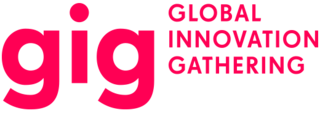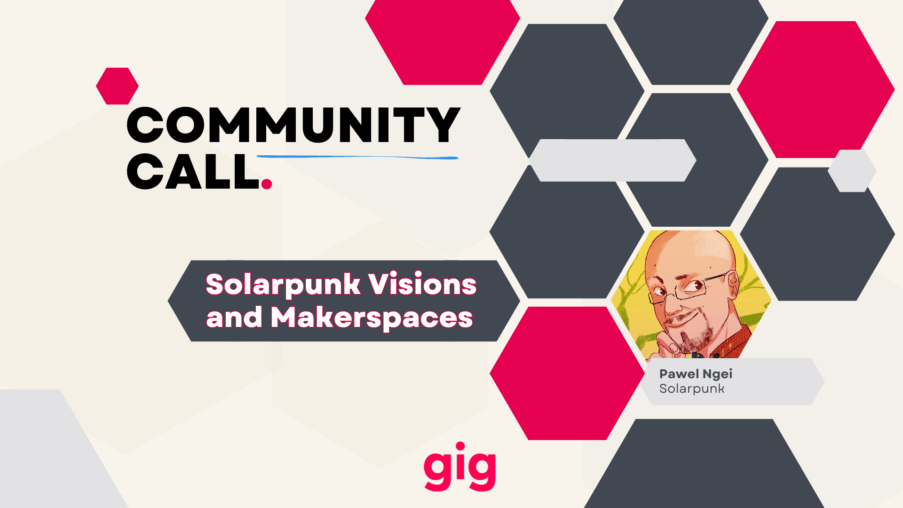The Global Innovation Gathering Community Call on Solarpunk Visions and Makerspaces unfolded as a continuation of a dialogue first ignited in Berlin earlier this year. The discussion revisited questions of visibility, imagination, and shared futures within the maker movement. Led by GIG member Paweł Ngei, the session examined how storytelling can function as a prototype for social and technological transformation.
Solarpunk, as introduced by Paweł, is more than a literary or aesthetic movement. It is a language of hope, one that uses narrative, art, and open collaboration to envision societies grounded in ecological balance and mutual care. His presentation, available here, set the tone for an exploration of how makerspaces can become laboratories for this kind of collective imagination.
The conversation opened by confronting an enduring challenge: the invisibility of community-driven innovation. Many maker initiatives operate at the edges of mainstream attention, even while cultivating alternatives to extractive economies. Through this lens, Solarpunk appeared not as escapism, but as an interpretive tool to render such invisible work legible to broader publics. Participants connected Solarpunk to Afrofuturism and Africanfuturism, recognising shared lineages of speculative resistance. As discussed during the call, these traditions have often been appropriated by Hollywood, yet their more profound significance lies in how they restore agency to communities narrating their own futures. More on Africanfuturism can be found in the Wikipedia article shared during the meeting. A crucial example was the Story Seed Library, an initiative that curates human-made Solarpunk art for open reuse. Accessible at storyseedlibrary.org, it resists the dominance of AI-generated imagery by foregrounding creative autonomy and community-authored futures. The project exemplifies how cultural artefacts can become seeds for participatory design.
The discussion then turned toward local adaptations of Solarpunk aesthetics. Ricardo Ruiz offered a reflection on youth culture in Recife, Brazil, pointing to movements like Rats from Favelas that reimagine urban survival through irreverent expression. His comment referenced a video shared on social media—Instagram link—that visually embodies a “don’t care” stance toward dystopian narratives, reclaiming agency through humour, nihilism and improvisation. This Brazilian example invited reflection on how Solarpunk can intersect with postcolonial imaginaries. Instead of importing speculative aesthetics from the Global North, the discussion underscored the need for decentralised storytelling that speaks from lived ecological realities. The reference to the Recife clip illuminated how everyday creativity can articulate resistance and renewal without institutional mediation.

As participants engaged in the chat, one recurring theme emerged: collective infrastructure, capturing the ethos of shared responsibility for material and digital commons. Solarpunk, in this sense, was not merely a narrative style but a framework for infrastructure building—open-source, participatory, and regenerative.
Paweł introduced additional resources connecting Solarpunk thinking to experimental publishing and storytelling platforms. Among these were Glider.ink, a space for collaborative zine-making, and El Futuro Imposible, a Spanish-language portal exploring speculative design practices. Both initiatives exemplify how distributed creative networks can articulate possible worlds across linguistic and cultural boundaries. The conversation also touched on the psychological dimensions of ecological work. One participant noted that Solarpunk may serve as a language to process ecological anxiety, especially among young people. This observation repositioned speculative storytelling as a method of care—helping communities imagine survival not as endurance but as transformation. In that context, participants discussed Video nas Aldeias (YouTube channel), a Brazilian project documenting Indigenous media production. The platform exemplifies how self-representation can challenge extractive narratives while fostering ecological consciousness through storytelling.
The conversation reaffirmed that Solarpunk is not a genre but a practice of world-making, rooted in open-source ethics. Paweł concluded by inviting participants to continue the exchange beyond the call. His gesture symbolised the distributed nature of the Solarpunk project: networks of correspondence, care, and creativity rather than centralised dissemination. The GIG Community Call on Solarpunk Visions and Makerspaces offered both a conceptual framework and a social practice. It proposed storytelling as a prototype for solidarity, reclaiming imagination as a collective infrastructure. The materials and links shared—spanning slides, artistic archives, and grassroots media—compose a distributed curriculum for those seeking to prototype the future together.


